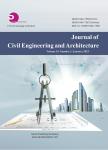Collaborative Design of Parametric Sustainable Architecture
Collaborative Design of Parametric Sustainable Architecture作者机构:Faculty of Architecture Delft University of Technology the Netherlands
出 版 物:《Journal of Civil Engineering and Architecture》 (土木工程与建筑(英文版))
年 卷 期:2012年第6卷第7期
页 面:812-821页
学科分类:1305[艺术学-设计学(可授艺术学、工学学位)] 01[哲学] 13[艺术学] 0101[哲学-哲学] 08[工学] 080203[工学-机械设计及理论] 081304[工学-建筑技术科学] 010108[哲学-科学技术哲学] 0802[工学-机械工程] 0813[工学-建筑学] 080201[工学-机械制造及其自动化]
主 题:Sustainable architecture BIM collaborative design parametric design IFC.
摘 要:Sustainable architecture is complex. Many aspects, differently important to many stakeholders, are to be optimized. BIM should be used for this. Building Information Modellingis a collaborative process where all stakeholders integrate and optimize their information in a digital 3D model. Sometimes it is called Green BIM. But what exactly is that? Is the International Standard Organization IFC standard useful for this? And is it compatible with new developments in parametric design? Advantages and disadvantages of BIM are listed. Full parametric design is needed because it keeps the design flexible and open for changes until the end of the design process. However it is not compatible with IFC; only object parametric design is. A possible way out of this paradox could be the use of scripts that only create objects if they are not already in the BIM database and otherwise only adapt their properties. An example of parametric sustainable architectural design explains the mentioned issues.




